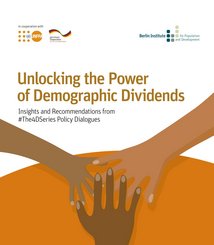
This report highlights the potential of targeted population policies to achieve demographic dividends.
Read more
Over the past century, life expectancy has grown steadily and seemingly inexorably. While an average person lived for 30 years around the year 1900, humans have now reached a mean life span of 71. Can this trend continue? Longevity-optimists are convinced that people living today may well age to 150. Yet in many developed countries, societies are divided into two groups: one consisting of people who grow very old, remaining fit and healthy for a long time; another consisting of less privileged individuals who are more likely to fall ill and die sooner. Health and life expectancy are essentially influenced by two factors: social status and the level of education. The study analyses the reasons for global differences in life expectancy. Society and politics are called upon to take action in order to compensate for health inequalities.
The Berlin Institute would like to thank the Nuremberg Institute for Market Decisions (formerly GfK Verein) for supporting this research project.
General inquiries
Telefon: +49 30 - 22 32 48 45
Contact via Mail: info@berlin-institut.org
© Berlin-Institut
Freelance research associate
© Berlin-Institut
Demographic change is not a disaster, but a challenge. Analyses and concepts are needed to master them successfully. The Berlin Institute for Population and Development provides these free of charge and makes a significant contribution to ensuring that important future issues are discussed on a broad basis and put on the political agenda. The non-profit Berlin Institute works on a non-partisan basis and receives no state funding whatsoever. Your donation therefore helps to maintain our independence and the high standard of our publications. Donations to the Berlin Institute are tax-deductible and can be made directly online using the donation button or by using a bank transfer form to the following account
Donation account
GLS Bank
IBAN DE15 4306 0967 1276 4833 00
BIC/SWIFT GENODEM1GLS
We thank you very much for your support!